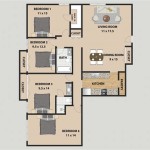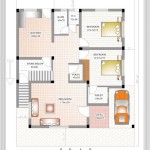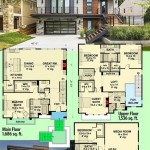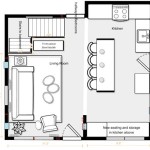Essential Aspects of Vastu House Plans
Vastu, an ancient Indian architectural science, plays a pivotal role in shaping the design and layout of homes, aiming to create harmonious and healthy living spaces. By adhering to Vastu principles during the planning stages, homeowners can harness the positive energies of nature to enhance the well-being of their families.
Incorporating Vastu into house plans involves considering several key aspects, each contributing to the overall energy flow and balance within the residence:
1. Orientation and Entrance
Vastu places great importance on the orientation of the house, with the main entrance typically facing east or north. These directions are believed to bring in positive energy and sunlight, promoting health and prosperity. The entrance should be well-lit, spacious, and inviting, as it symbolizes the gateway to the home.
2. Kitchen Placement
The kitchen, where meals are prepared, is considered the heart of the house in Vastu. It should be located in the southeast corner, as this direction corresponds with the fire element. By placing the kitchen in this zone, homeowners can enhance their financial stability and digestive health.
3. Bedroom Positioning
Bedrooms serve as sanctuaries for rest and rejuvenation. According to Vastu, the master bedroom should be in the southwest corner, facilitating restful sleep and promoting intimacy. Other bedrooms can be located in the west or south, ensuring privacy and reducing stress.
4. Bathroom and Toilet Placement
Bathrooms and toilets are considered areas of waste disposal, so their placement in the house is crucial. Vastu recommends locating them in the northwest corner, away from the main living areas. By isolating these spaces, homeowners can prevent negative energies from affecting the rest of the home.
5. Staircase Location
Staircases are a significant element in multi-story homes. Vastu suggests placing them in the south, west, or southwest corners. This positioning ensures that the staircase does not obstruct the flow of positive energy and maintains the harmony of the house.
6. Natural Elements
Incorporating natural elements into Vastu house plans is essential for creating a balanced and healthy living environment. Ample natural light, ventilation, and greenery foster positive energy and enhance the well-being of occupants. Large windows, balconies, and open courtyards can effectively bring the outdoors in.
7. Energy Zones
Vastu divides the house into nine energy zones, each associated with a particular planet and direction. By understanding these zones, homeowners can optimize the placement of different rooms and activities to maximize the positive effects of Vastu. For example, the northeast zone is associated with spirituality and growth, while the southwest zone governs relationships and stability.
Incorporating Vastu principles into house plans not only enhances the aesthetics of the home but also creates a living space that nurtures physical, mental, and emotional well-being. By aligning the design with the ancient wisdom of Vastu, homeowners can create harmonious and auspicious homes that promote happiness, abundance, and peace.
Gorgeous North Facing House Plans As Per Vastu Shastra

Vastu House Design Services At Best In Noida Id 20808305488

30 X40 East Facing House Plan Is Given As Per Vastu Shastra In This Autocad Drawing File No Little Plans Simple Layout
The Best West Facing House Plans As Per Vastu Shastra

Wondrous East Facing 2bhk House Plans As Per Vastu Shastra Buy By A S Sethupathi At Low In Flipkart Com

East Facing House Vastu Plan Tips And Things To Avoid

North Facing House Design As Per Vastu 2 Y Plan And Designs Books

400 House Plans As Per Vastu Shastra Buy By Pathi Sethu At Low In Flipkart Com

110 South Facing Home Plans As Per Vastu Shastra Ebook By A S Sethu Pathi Epub Book Rakuten Kobo

27 Best East Facing House Plans As Per Vastu Shastra Civilengi N One Floor








